
How to create a profitable spa membership with Addo Aesthetics
Daniela Woerner breaks down how to use spa memberships strategically to increase prices, boost client loyalty, maximize retention, and fill up your books.

Content Marketing Manager
For many spa owners, Daniela Woerner needs no introduction.
Her extensive background in the spa world as an esthetician, former spa director, and consultant to leading skincare brands have formed the basis of her expertise in all aspects of the industry.
But her career in the spa is, perhaps, not what she is best known for. Most notably, Daniela’s keen eye for marketing strategy, business building, and retail sales have provided her with the insight to lead other estheticians to incredible success as spa owners - as the mastermind behind Addo Aesthetics.
Daniela sat down with our own VP of Sales, Marchelle McKeirnan, to talk memberships, client loyalty, and doing the right thing instead of doing everything as a spa owner. Featured below is an excerpt from that interview featured on episode 322 of the Spa Marketing Made Easy podcast.
Loyalty programs don’t create client loyalty
DW: So, take me back to when you first got into this industry. I know now you're at Mangomint. You're in a different kind of season of life in your career. But you were a salon owner, you sold your business, you had a lot of memberships, and that was a big part. Take me back to wherever you want in your journey of getting into this industry and what led you into opening your business?
MM: Yeah! I got my cosmetology license in like, end of 2006. And when I joined the industry, I joined in the salon side. So I joined a salon where I trained as a haircutter, and it left me yearning for like a lot of different pieces. It was a wonderful salon. I had the best education I could have ever hoped for, but shortly thereafter—I think I was there for about four years—I started yearning for something that I could like maybe control, but also build.
And so in 2013, I opened my salon in San Diego and we started with hair: haircutting, hair coloring, and added hair extensions. I educated for a hair extension company, and soon thereafter I decided to bring in a nail technician—she was a natural nail technician—and this is when my wheels really started turning, in terms of the things I was coaching on. At this time, I also brought on a couple local salon and spa owners and coached them, and one of the things that I kept seeing was [that] there's a lot of pressure in our industry to create a loyalty program or [to determine] how do you reward loyal and faithful customers? And it never resonated with me for a couple of reasons.
One, you know, when you go to Sephora or Ulta and you get to the register and they're like, "Can I get your phone number?"
DW: They just want your phone number! I'm like, “No!”

MM: And then they're like, “You have 1,742 points. Would you like to claim this dinky little thing? Or we can take off $5.” Maybe it's ten, but that's the whole point is, like—I have no idea what those points mean. I'm going to come back to you regardless because you're the local store that has this one particular thing I need. But it wasn't meaningful. Like, that point is not what brought me back in.
And so when I thought about it in the salon or spa space, I started to think that our customers either are or are not loyal and faithful to us, not because of points, but because of something else. And what is that?
Well, it's a service that they want to recur and get on a frequent or very frequent basis, whether that's monthly, bi-monthly, whatever that is. And so, when looking at the services that a customer gets monthly, at that time, for me, the reason I brought on nails was actually—I’ll totally shout her out—her name was Bronte.
She was a San Diego-based nail tech, and it was an experience when I would go and see her, I had never experienced something like it. The care she gave to the cuticle, the way she taught me about my own nail bed. And she was the first person that I saw, like dead-consistent. Every two weeks, I was in her chair.
And I started to think, like, if I could just have this as a membership, I would. I'm already coming twice a month, but maybe there was additional perks there.
And so that's how I think about a membership, this is a way to reward the people who are already loyal and faithful to you, and then you can give them, you know, an added value, whether that is—and we will get more into this—locking them in at their current price for whatever period of time for that membership or giving them an additional perk. So 10% off products, things like that.
And that was like the solution to me and to my salon and spa friends in San Diego that I was coaching... That was the thing that was, like—it clicked.
This is about the recurring revenue and this is about rewarding your loyal and faithful customers who are already there already doing that, and then they will spread the word.
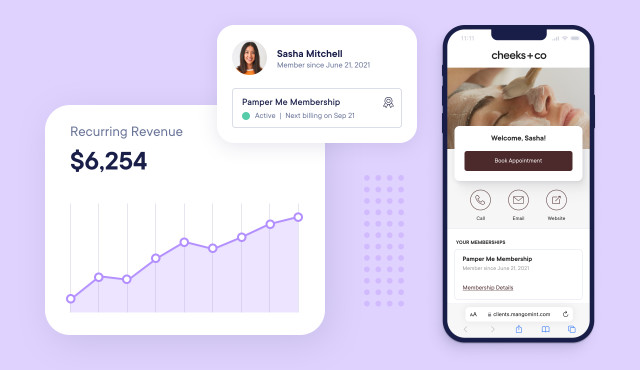
Creating recurring revenue through spa memberships
DW: When I talk to spa owners...and I feel like spa and salon, like we're cousins, you know. There's a lot of differences that happen in the world, but we're definitely related. And our spa owners, if they start out with their name on the door and they're a solo esthetician, it's really hard to get away from that.
But if you start by building an actual company and having them have the experience at your company, it's the experience of how your company makes them feel. And when you have membership, you're not starting at zero every month.
And I believe that allows the owner to make decisions that are not fear based or coming out of scarcity. It's "What is what's the actual vision for the company?" Because, so often when we're building a business… really, in the first five years, it's “Who are we? What are we about? How am I going to make enough money to pay myself?” You know? It's all this—just flying by the seat of our pants—really is what it kind of feels like.
When you have recurring revenue, which most typically is through membership—there's a few options in spa where we can do subscriptions on products, etc., but for the most part, the bulk of the revenue is coming through membership—you are able to know that your rent, your payroll, all of these things, if you have those taken care of your with cashflow, you can take more risk.
You can make more strategic decisions. You can spend more time building strategic partnerships with others in the industry and therefore your company.
I mean, forget about $30,000 a month. You can get far higher than that, right? I mean, I know in the spa world there's lots of spas that have three-, four-, five-hundred members every single month that they're also upgrading to other services. And and when you get a lifetime customer value that's increased so much because of the membership, it's tremendous.
So I want to talk about Mangomint for a minute here because you guys introduced a membership software, is that right? Or you have a membership aspect in your software?
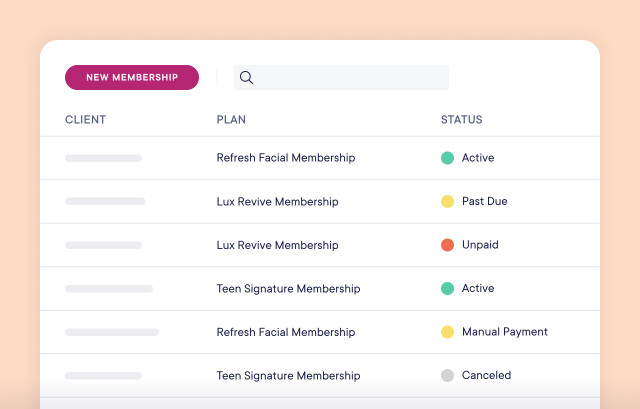
MM: Memberships we launched… Gosh, I want to say it was early 2020… What we really wanted to create was something that hummed in the background. It's not top of mind, but what it does is it gives you a peek inside—like, you can lift up the hood.
Like right now you can pull a, let's say, retention report of new clients—how many of them returned with a 90-180 days. But the ones that didn't return—actually figuring out who those customers are—you then have to pull in.
There's something really beautiful about the membership, and what I loved this from the beginning when we started (with Mangomint) is we can see exactly who canceled their membership. And it gives you this insight as a business owner as to like these little peeks of, “Okay, if we created this beautiful membership for people who are already coming in, why are they canceling?”
So when we launched it, it was really interesting, because we actually had quite a few businesses that were just in their infancy, maybe opened their doors a month prior to the pandemic hitting, especially in California.
And what was really interesting was watching those who had just started building up their memberships and how many of those customers said, “Actually just keep my membership active so I can support you through your closure.”
And, you know, the[se salons and spas] were allowing them to bank those credits for when they reopened.
So all of this is happening at once. We launch memberships, we see people go hard with selling them and then we see revenue still happening while doors are closed.
And then we started watching the doors reopen and we're seeing businesses—when I mentioned the case study that I was referring to, that’s within three months of reopening their doors post-COVID shut down—they had $30,000 a month in recurring revenue and that was only 50% of their total service revenue.
So those are the kind of juicy, powerful memberships that Mangomint really wanted to create. And we made it really simple. You can do it in a couple of different ways within our platform.
The membership I'm part of where I live is a 60-minute massage or a 60-minute facial every month: $90. It's a steal of a deal. You can upgrade when you go in—I think they have a 90-minute version as well. And so you get a credit for this or that.
And in Mangomint, that's exactly how you build it. You click the service you want, you click the other service. So it's this-or-that or it's this-and-this. And you can have as many—in terms of quantity—as you want.
Make it stupid-simple. I personally believe in service-based memberships—because I think that the consumer, when they can connect to what it actually is that they're getting—[it’s best not to have] too many options, you know? It's chocolate or vanilla, bacon or sausage. So I prefer that model.

The spa that does everything is the spa that does nothing
DW: That's what we coach on as well. The brand that does everything is the brand that does nothing. So it's like, service A, service B, you know: facial / massage, facial / hydra facial, whatever you're doing—and then 10% off retail, 15% off upgrades, whatever the additional benefits, [for instance] members only events. But the more simple and clear that you can keep it, the better.
And… when someone comes out of a facial fog and we're like “We have eight different memberships - if you like to wax or if you like body contouring, if you like this,” it's like, "No way".
A confused mind is always going to say no. So the more simple that you have it, the better. And we also—I know you and I are aligned in this—but we also believe in creating a client journey for that membership. What are the touch points for when they first join at the 30-day mark, 60-day mark, 90-day mark, and so on? So that we're really focusing on making those members feel seen, heard, valued.
And the more that you can build that deeper relationship, those are going to be the people that, in the hard times, [say] “Oh, I want to support you through... you know, being shut down because of the pandemic. I want to support you through this.”
Those relationships don't get built with the people that come in twice a year. For the most part, I don't want to, you know, say never, but for the most part, the more frequent[ly] you see somebody, the deeper the relationship that you have, the more they're going to support you and your business.
MM: Absolutely. It's nice to see that echoed in the work that we've done at Mangomint… I got chills when you mentioned how you coach your memberships. That is exactly what Mangomint does.

And it's interesting because people want to go, okay, I want to build that. You know, I can't tell you how many times I've heard that. And if it works for you, great. But I'm just going to speak from personal experience:
How many times have you ever gone to a business or heard a salon or spa owner say,
"I want to build this membership and it's going to be," you know, "this facial or that facial, but they only get a discount on this product, this product, this product. This one doesn't count. This one doesn't count, this one doesn't count. This service doesn’t." And it's immediately a turnoff for your customer.
Keep it stupid-simple, and really build something that is meaningful to them and adds value. I mentioned the spot that I go to in my town. They give me… I think it's 5% off products. But I'll tell you, that's the difference in me going in shopping online or going to Sephora and just purchasing the Eminence line from that because it’s 5% off and I'm [already] there. They have me as this captive audience.
DW: I think they should be doing ten. If I were coaching them, I would tell them ten.
MW: But it's funny, because I ended up I ended up churning out of their membership, and I was thinking about it the other day and kind of thinking about meeting with you. And I was like, “Why did I stop going?”
And to be honest, there [were] two challenges that I was having.
Three times in a row, my appointment was canceled and it gave me the feeling—at this time their membership was $75 a month, so it was a facial or massage—that members were almost undervalued, because they had underpriced their membership.
And so when I canceled, I was like, okay, it's $75 a month. It's so inexpensive for an hour-long massage and facial, especially in my town. And then going back to them when I was going to sign up again, I noticed that they raised the price, and it was more like a 20% increase.
And I was like, "Well, that's more like it. It's still very affordable."
But what was interesting was that's where they failed from the beginning, is instead of looking at a membership like a premium experience, they were trying to create a discount experience. And then when their service providers were going to provide those types of services, they almost didn't want to because they were probably getting their commission on the discounted price.
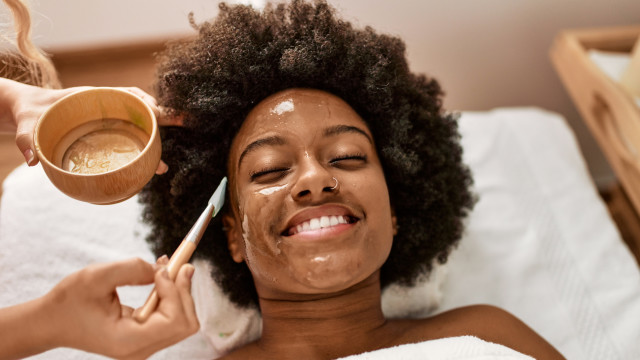
Spa memberships should feel like a VIP experience
DW: I'm glad that you brought that up. Something that we coach on and believe in very much is… nobody gets a better deal than your members.
Your members get, you know, a lot of times they'll get preferred scheduling. They'll get members only events. We have spas that send Mother's Day flowers to every single one of their their members, and just doing all kinds of things to make them feel like the most VIP person. Like membership is: We're going to roll out the red carpet for you.
And if you don't feel like that in your location [as a client]—if you have a membership and you haven't booked your appointment and someone's not calling you to say, “Hey Marchelle, I saw that you weren't booked this month. I know you must be really busy. I just wanted to be proactive and help you get that.”—you know, taking care of people are afraid to pick up the phone, [then something’s missing].
But when you take a membership, when you have a membership and you really focus on it and treat those people like VIPs, you grow so fast.
And as you alluded to, if selling your company is some is part of your exit strategy, whether that's, you know, a year from now or ten years from now, the valuation of your company goes up by hundreds of thousands of dollars if you have a membership [program]. So it is absolutely worth your time.
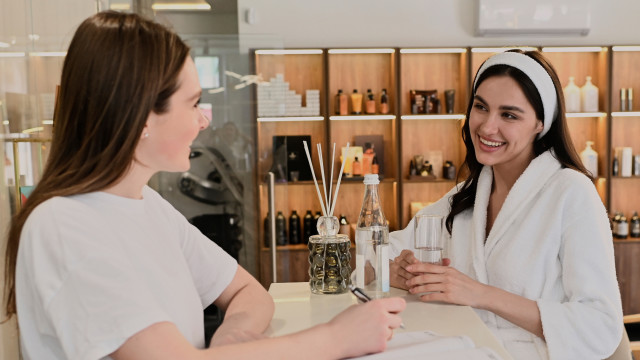
MM: And it's never too late to correct course in a membership! But, also if anyone is considering building it, I think the two things that are coming out of this past 3 minutes of our conversation is, one: If you're just starting out in membership, there's the example I gave. Where they went wrong was trying to make it a value based or like a discount based to sell it when really if...
Let's put it in simple terms: if your 60-minute basic facial and your 60-minute massage is $90 and you're about to start a membership—in my opinion—the membership should be $90 and then any non-member should go up to $110.
DW: Increased by 20%! Yep.
MM: So that's number one. If you are currently doing memberships and you have you know, you thought about it in the way of saying, "Oh, a member is $75 or a member is $85," I encourage you to—across the board—make that increase, and then level up your membership. Like you just said, roll out that red carpet.
Nurture these people, because the more you nurture them and you give them that 10% off additional services, 10% off additional products, that's where that growth comes, like it comes in the other areas.
And then you stop worrying about the staff member who is thinking, "Okay, now 80% of my books are these members, but they are getting a lower price than what I used to be charging. So you never want to go backwards in building a membership. And that's something that I've really seen. This should benefit the business and the client.
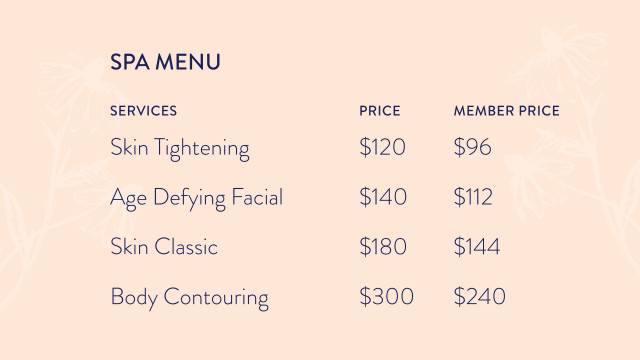
How to raise service prices through memberships
DW: So, one way to be really thoughtful as you're creating your membership is to first take a look at your menu of services. Understand your cost of treatment and profitability on each service.
So really look at, you know, “How much am I spending on consumables? What am I spending on payroll? Is this priced appropriately to begin with? And then "What can I go down to? “Do I need a price increase?” Really looking at all of those things.
And when you launch a membership, it is a great opportunity to increase your prices concurrently with the launch of the membership so that it's like, "If you want to be a member, your price is going to stay the same." You know? So it gives that added benefit.
And it's also not as... I'm going to just use quotes here and say "scary," because a lot of people hate raising their prices. But it's not as scary to do it if you're saying "But you can keep your price the same if you join the membership and do a six-month commitment."
MM: Literally rolled into a perfectly-wrapped present. You tie the bow on top. It's the person who rolls out of that 60-minute facial. And as you're walking to the front, like you may have seen signage around, if you use that or you use marketing emails to communicate your membership.
And it's simply a question of, you know, "Daniela, I hope you loved your facial today. I've noticed you come in every month. We've just launched our membership. If you want to remain at the $90 price, you can join our membership. Otherwise your next facial outside of membership would be $110. Which do you prefer?" Again, it's chocolate or vanilla. It's like such an easy, smooth conversation.
DW: Doesn't have to be pushy.
MM: No! It's just "Do you prefer this or that?" It's so simple. But, needless to say, that that is something that needs to be rehearsed. It needs to be structured, it needs to be communicated to your team…
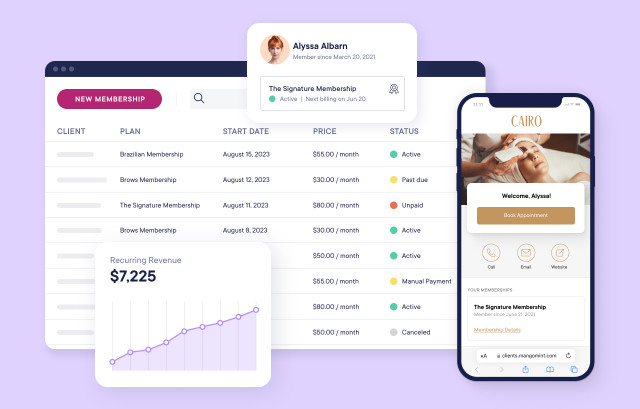
Build better spa memberships with Mangomint
MM: If you're curious about- even just how to build a membership, Mangomint has the great free trial and you can just hop in there. There'll be a demo mode with memberships in there and fake cards on file. You can literally start [a trial right now] and just see how easy it is.
I know plenty of softwares that do it, but the one thing that, you know, I think has to happen is: It's got to be easy for you as well. If you're not using the right technology to make that recurring [element] automated, that's another sticky area that could potentially cause you to fail.
Like if I get to the front desk and they don't know where my membership credit is and they have to find it here and apply it there, it's just not going to work.
So I would say hop on there. Something else that's kind of cool about Mangomint, we don't use any bots, so if you do get on the website and have questions, click the chat bubble and there will be a real person there to help you.
DW: Oh, I love that!
Continue The Conversation With Addo Aesthetics
For more from Daniela and Marchelle, listen to the entire episode on your favorite streaming platform:
To watch the full video episode and learn more about Daniela and Addo Aesthetics, check out the Addo Aesthetics blog.


